#Trinity United Church of Christ
Text
Delicious
This week marked the start of our first Guided Autobiography session of 2023. Our first theme? Delicious.
It’s my grandmother’s kitchen that I remember.
My grandmother, Pauline Barber Roth, was a good grandmother. That being said, Pauline hated my grandfather, her husband Robert, with whom she bickered on a daily basis. One could also assume Pauline hated her only child Barbara, my mother,…

View On WordPress
0 notes
Note
Feel free to not respond to this ask if you don’t know the answer, but I’m Catholic and I’m curious about the theological differences between Catholicism and episcopalianism? Do you guys have similar views of Mary + the saints as Catholics or is it totally different like with other Protestant denominations? + are there any other notable differences? Thanks!
hi!!
so first of all this comes from my own experiences and research so it’s of course in incomplete, but anyways! i also want to say that the Episcopal church (which I will call TEC for shortness sake) is united by Orthopraxy (shared worship) instead of Orthodoxy (shared belief). There is a wide variety of theological belief within TEC, but we are united by observing the Eucharist each Sunday.
some things we have in common
- prayers of intercession to the saints and Mary
- observing the sacraments (baptism, confirmation/catechism, Eucharist, confession, marriage, holy orders, and unction)
- the structure and wording of our Sunday Eucharist service is nearly identical. I have been in Catholic churches that don’t speak the same language as me and was able to follow due to the similar structure
- belief in the life, crucifixion, resurrection and ascension of Jesus
- belief in the trinity
some differences within TEC
- while Episcopalians affirm the Real Presence of Christ’s body and blood in the Eucharist, we don’t have an overly specific definition of how that happens.
- the sacrament of confession is optional as opposed to compulsory.
- no official recognition of purgatory
- no recognition of the Pope or any central authority on theology. bishops serve as shepherd to their larger communities and the church
- priests and bishops do not have to be celibate. priests can be married. holy orders are open to all people, not just men.
- the sacrament of marriage is open to gay couples
and that’s just some things!!
TLDR: we as people who love and follow a loving God have so much in common. i love the church i am in, but i also see so many ways in which we could be better reaching out to the poor and outcast. please feel free to message me with any other questions! the Book of Common Prayer is also a good place to find info about the church and it can be found online for free!
19 notes
·
View notes
Text
“So, we begin with biblical balance, weighted somewhat toward unity, and then we start coming into contact with Christians, churches, and ministries about which we must make relationship decisions. Before we look at the different kinds of relationships and associations that may result from this, we need some criteria to help us decide which way to go.
There are four areas to consider when deciding the nature of a relationship with other Christians. The most important area is doctrine. As Christian unity is unity in the truth, we must ask what this Christian or church believes.
However, even before that, we have to ask, what doctrines are fundamental and nonnegotiable? Do we insist on complete agreement on every single truth before we have any kind of association with any Christian or church? If so, one will end up uniting only with oneself.
That's why we need a sliding scale of biblical truths and principles that will determine to what degree we unite or separate. At the top of that scale, we might put the inerrancy of Scripture, the Trinity, the deity of Christ, justification by faith alone, Jesus as the only way to God, and other primary truths. Without the basic foundation that such truths provide, there can be no spiritual relationship of any kind.”
— David Murray (Degrees of Separation)
#some of you need to brush up on what primary secondary and tertiary doctrines are again#ligonier ministries#articles
22 notes
·
View notes
Text
Today is the day I've been working towards for the past year, the day of my initiation into Christ's church! Today I have been Baptised, Chrismated, and partook of my first Communion. It feels impossible to describe how I feel in this moment, knowing that I've been joined to the Body of Christ, having had my sins washed away and having been filled with the Holy Spirit. I feel so blessed for the perfect day I had today, thanks be to God!
"Participation in the life of the Most Holy Trinity becomes a reality for us through the Holy Mysteries of Baptism, Anointing with Holy Myrrh (Chrism), and Eucharist. In other words, we partake of God's life by being united to Christ, receiving the seal of the Holy Spirit, and sharing the Body and Blood of Christ in the community called Church. As a person after birth begins to breathe and then receives nourishment in order to live, so the newly baptised, born to new life in the baptismal font, begins to breathe by the Holy Spirit and receives the nourishment of Holy Communion in order to grow in Christ. Through the prayers and sacred actions of the liturgical rite of each of these Mysteries, the Church leads the faithful (the Greek Fathers speak of mystagogy - leading into the mystery) into an understanding of the Mystery and perceiving it as a single, unified action of God's grace. This why in the tradition of the Eastern Church, these three Holy Mysteries are celebrated together."
Source: 'Christ - Our Pascha', the catechism of the Ukrainian-Greek Catholic Church
#baptism#catholic#christian living#christianity#jesus#christian faith#jesus christ#eastern catholic#ukrainian catholic
13 notes
·
View notes
Text

Nestorius precipitated the controversy by declining to call the Virgin Mary 'Mother of God' (Theotokos). This title was already accepted in popular devotion, but it seemed to Nestorius to imply a confusion of Christ's manhood and His Godhood. Mary, he argued [. . .] is only to be called 'Mother of Man' or at the most 'Mother of Christ', since she is mother only of Christ's humanity, not of His divinity. Cyril, supported by the Council, answered with the text 'The Word was made flesh' (John i, 14): Mary is God's mother, for 'she bore the Word of God made flesh'. What Mary bore was not a man loosely united to God, but a single and undivided person, who is God and man at once. The name Theotokos safeguards the unity of Christ's person: to deny her this title is to separate the Incarnate Christ into two, breaking down the bridge between God and man and erecting within Christ's person a middle wall of partition. Thus we can see that not only titles of devotion were involved at Ephesus, but the very message of salvation. The same primacy that the word homoousios occupies in the doctrine of the Trinity, the word Theotokos holds in the doctrine of the Incarnation.
-- Kallistos Ware, The Orthodox Church
22 notes
·
View notes
Note
oh wise adult what is the difference between a Christianity and Cathlotics omg help pls my family (my moms side) (and they're super strict) IDK WHAT TO CALL THEM IM AFRAID OF OFFENDING THEM OGM
No problem!
Christianity is an umbrella term for people who believe in the holy trinity (God the Father, God the Son, and the Holy Spirit), believe Jesus of Nazareth is the son of God and the prophesied Messiah, and use the Bible as sacred texts.
Catholicism is a denomination of Christianity. Each denomination has slightly differing beliefs. For example, Baptists don’t believe in the Real Presence of Christ in the Eucharist, but rather see communion as an act of remembrance. Catholics, on the other hand, believe in transubstantiation (the bread and wine BECOME the body and blood by divine intervention.) Catholics hold certain beliefs that not every denomination may hold, such as believe in the immaculate conception (Mary was born without original sin) and the perpetual virginity of Mary (the idea that Mary was always a virgin, even after she gave birth to Jesus). I grew up United Methodist (another Christian denomination), so a few of these beliefs were challenging for me as I transitioned to Catholicism!
There are lots of forms of Christianity. The core beliefs that separate Christians from other religions are found in the apostle’s creed, which (unless I’m wrong) is a near-universal affirmation of faith across denominations (Catholics use the nicene creed, which is a lot of the same stuff but more specific). When the apostle’s creed says “catholic church,” it means unified church, rather than Catholic as in the denomination.
The Roman Catholic Church traces its origins all the way back to the time of the disciples, with the belief being that Peter was appointed the first pope by Jesus and through apostolic succession, this role has been passed down through generations all the way to today’s current pope. Catholics have many ancient traditions because they are one of the oldest forms of Christianity, alongside Greek Orthodox.
The easiest way to understand it is the square-rectangle example: a Catholic is a Christian, but not every Christian is a Catholic.
I really hope that helps!
4 notes
·
View notes
Text


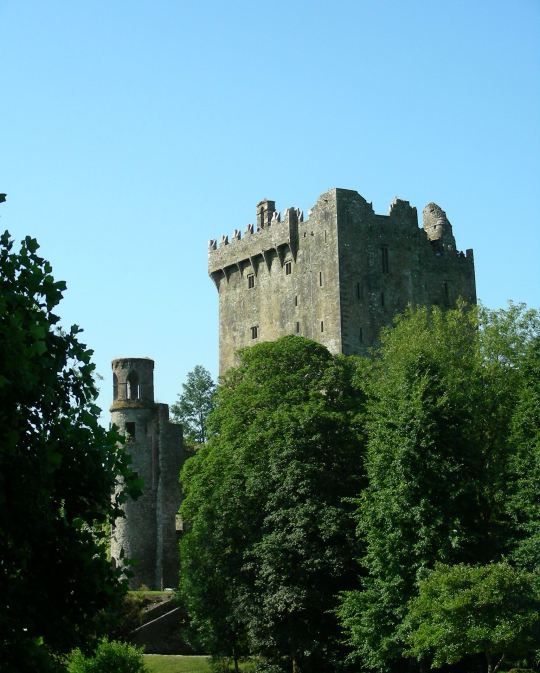






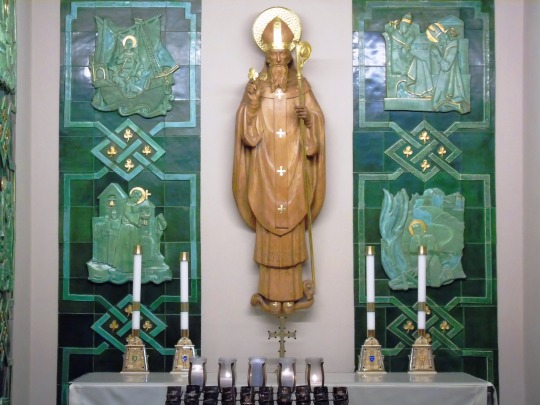






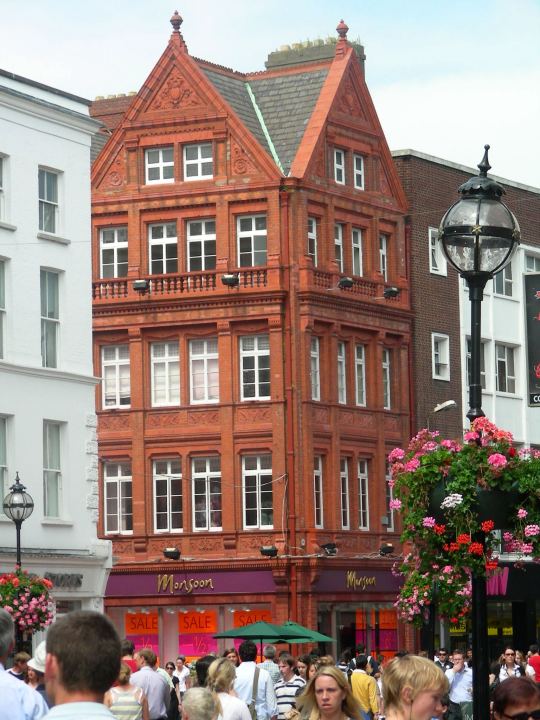

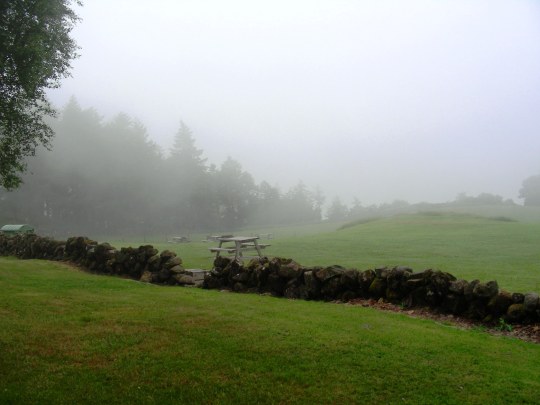
Saint Patrick’s Day
Saint Patrick’s Day is an annual feast celebrated on March 17th. Get ready to don yourself with the greenest garb, eat some clover-shaped cookies and march in Irish pride parades. St Patrick was the patron saint and bishop of Ireland. He was also the national apostle of Ireland who is credited with bringing the Christianity to Ireland. St Patrick’s Day is a religious feast day in the 17th-century which has evolved into a variety of festivals from across the globe. The celebration includes Irish culture with parades, special foods, music, dancing, and a whole lot of traditional green feast of the meal of Irish bacon and cabbage. St Patrick’s Day is also celebrated inside and outside of Ireland as a cultural and religious holiday. Saint Patrick’s Day is a global celebration of Irish culture and honors St Patrick, one of Ireland’s patron saints.
“Christ beside me, Christ before me, Christ behind me, Christ within me, Christ beneath me, Christ above me.” – Saint Patrick
History of Saint Patrick’s Day
The origin, history, and the first observance of Saint Patrick’s Day are as old as St Patrick. Therefore the exact person or organization who has come up celebrating the St Patrick is anonymous. However, the history and tradition of St Patrick’s Day celebration are rich and long. March 17th is chosen for the feast as it is the traditional death date of Saint Patrick in or around the year 493. St Patrick’s Day is otherwise called as or the Feast of Saint Patrick or Lá Fhéile Pádraig in Irish, meaning the Day of the Festival of Patrick. It is a cultural and religious celebration, and the Irish have observed this day as a religious holiday for beyond 1,000 years. St Patrick’s Day was made as an official Christian feast day during the early 17th century and is observed by the Catholic Church, the Anglican Communion, the Eastern Orthodox Church, and the Lutheran Church.
St Patrick’s Day commemorates Saint Patrick and the arrival of the Christianity in Ireland. The annual commemoration, in general, celebrates the rich heritage and culture of the Irish. People in Ireland have been celebrating the Roman Catholic feast day of St Patrick on March 17 around the ninth or tenth century. The first parade was held to honor St Patrick’s Day took place in the United States and not in Ireland. The celebration Day falls during the Christian season of Lent, and the Irish families would traditionally attend the church in the morning and celebrate it in the afternoon. People will drink, dance and feast on the traditional meal of Irish bacon and cabbage as the Lenten prohibitions against the consumption of meat were abandoned on the celebration.
Saint Patrick’s Day is still a public holiday in many countries including the Republic of Ireland and has also been celebrated in more countries than any other national festival. Until the late 20th century, the St Patrick’s Day was often a bigger celebration among the diaspora than it was in Ireland. Celebrations usually involve the public parades and festivals, Irish traditional music sessions, and the wearing of the green attire or shamrocks. The Irish brands of drinks are popular at the St Patrick’s Day events. The shamrock is considered to be the most common St Patrick’s Day symbol. The shamrock is traditionally the leaf of the clover plant that is referred to as a symbol of the Holy Trinity. People prefer to wear the color green and the St Patrick’s Day parades will hold the flag of the Republic of Ireland around the world.
The custom of ‘drowning the shamrock‘ or ‘wetting the shamrock‘ on the St Patrick’s Day was historically popular, especially in Ireland. A shamrock is then put into the bottom of a cup at the end of the celebrations and then the cup is filled with the alcohol like whiskey, beer, or cider. The alcohol is then drunk as a toast to St Patrick, Ireland, or those present. The shamrock will either be swallowed with the drink or taken out and tossed over the shoulder for the good luck. It was said that St Patrick had rid Ireland of snakes. However, there have been no snakes in Ireland. Saint Patrick was a 5th-century Romano-British Christian missionary and is considered to be the foremost patron saint of Ireland. He was an “Apostle of Ireland” and bishop in Ireland. Patrick was thought to be born in Roman Britain and was kidnapped and taken to Ireland as a slave when he was 16.
Records say that St Patrick was actually born as Maewyn Succat, but later he had changed his name to Patricius or Patrick that derives from the Latin term for “father figure,” after he has become a priest. He had later escaped but returned to Ireland. Patrick was also credited with bringing the Christianity to the people of Ireland. Patrick had already come to be worshipped as the patron saint of Ireland by the seventh century. The precise dates of Patrick’s life are uncertain as there are many conflicting traditions prevailing regarding the year of his death. It is said to have died on March 17 in or around the year 493. It is said that he had been buried under the Down Cathedral in Downpatrick, Ireland. Thus the St Patrick’s Day celebration is held on the same date throughout the world.
How to Celebrate Saint Patrick’s Day
Celebrating the Saint Patrick’s Day is quite easy. You can wear any green clothing on this celebration Day. Visit a church and attend a St Patrick’s Day parade. Serve your children with sweets and adults can enjoy drinking a ‘pint’ of beer at a local pub. You can organize parties at your home featuring the homemade Irish food and drinks that are dyed in green food colour are part of this celebration. Include the meal of Irish bacon and cabbage to treat your friends and family. If you are affordable, take a visit to Ireland to indulge yourself in the traditional celebrations. You can even go to any restaurants and pubs which offer Irish food or drink to celebrate this Day.
Source
#Saint Patrick’s Day#StPatricksDay#SaintPatricksDay#17 March 493#travel#anniversary#Irish holiday#original photography#Ireland#Cork#Cobh#Cathedral Church of St Colman#architecture#cityscape#ruins#flora#landscape#countryside#seascape#Irish Sea#tourist attraction#landmark#summer 2006#Muir Cheilteach#Blarney Castle#River Liffey#Dublin#Trinity College#St. Patrick's Cathedral#Cathedral Basilica of St. Augustine
6 notes
·
View notes
Text
Hello friends ✨
Here are 5 notable heresies, each with its own distinct nature and origin:
1. Arianism: Arianism, attributed to Arius (a priest in Alexandria in the 4th century), denies the concept of the Trinity and the divinity of Jesus Christ. It asserts that Jesus, while divine, is not equal to God the Father. Arianism was rejected as heretical at the Council of Nicaea in 325 AD.
2. Gnosticism: Gnosticism was a diverse movement influenced by Greek philosophy and various religious traditions. It claimed special spiritual knowledge (gnosis) necessary for salvation, considering the material world as inherently evil. Gnostics believed in a secret divine realm and considered Jesus as an emissary from that realm. Gnosticism was prevalent in the 2nd to 4th centuries AD and was rejected as heretical by orthodox Christianity.
3. Nestorianism: Nestorianism, associated with Nestorius (Patriarch of Constantinople in the 5th century), taught that Jesus had two distinct natures: a human nature and a divine nature, which were not fully united. This belief challenged the concept of the hypostatic union, which asserts that Jesus is fully God and fully human. Nestorianism was condemned at the Council of Ephesus in 431 AD.
4. Monophysitism: Monophysitism, championed by Eutyches (a monk in Constantinople in the 5th century), claimed that Christ had only one nature – a divine nature with the human nature being absorbed into it. This view denied the orthodox understanding of Jesus' two distinct yet united natures. Monophysitism was rejected as heretical at the Council of Chalcedon in 451 AD.
5. Pelagianism: Pelagianism, associated with the teachings of Pelagius (a British monk in the 4th and 5th centuries), rejected the doctrine of original sin and the idea that humans are inherently sinful. Pelagians believed that individuals can attain salvation through their own efforts and good works, without relying on God's grace alone. Pelagianism was condemned as heretical by several church councils.
It's important to note that heresy is determined by orthodox Christian authorities and their interpretation of Scripture and tradition. These heretical movements emerged due to differences in theological interpretations, cultural influences, philosophical ideas, and debates within the early Christian communities. Early Christianity, influenced by various councils and consensus among church leaders, defined certain teachings as heretical due to their departure from widely accepted (and BIBLICAL) beliefs about the nature of God, Jesus Christ, and salvation.
#christianity#catholic#heresy#Church history#It’s very easy to fall into any one of these#so be aware and don’t forget to read your Bible#God bless you and keep you#Dew does things
7 notes
·
View notes
Photo

(via We Are To Walk In The Unity Of The Spirit)
We Are To Walk In The Unity Of The Spirit
https://www.unitedbyprayer.com/united-by-prayer-wall/we-are-to-walk-in-the-unity-of-the-spirit
As members of the Church, we are to live a life that is worthy of our calling. We are to clothe ourselves in humility before God our Father, and We Are To Walk In The Unity Of The Spirit, in the bond of peace. And in this passage, we are given the many elements of unity that are ours in Christ Jesus - our one and only Lord and Savior. The universal Church of believers is one Body which is inhabited by the same Holy Spirit of God. The Trinity is integral in this passage, where we stand united by one faith through believing in the one, unchangeable body of truth which is recorded in the eternal Word of God. As believers in the gospel, we were all baptized into the Body of Christ by the Spirit of God and are being built up into a holy habitation for the Lord. We all acknowledge one God and Father of all, "Who is over all and through all and in all," for by grace through faith in the eternal Son of His love, we have been redeemed and declared righteous in the eyes of God and He has made us His children.
one God and Father of all, who is over all and through all and in all.
Our United Prayer:
Heavenly Father, thank You that Jesus is the Word made flesh and that in Him is eternal life. Thank You for the Holy Spirit Who is building us into a holy habitation for our God and Father. Thank You for the Word of life and the truths that it contains. and thank You that by faith in Christ Jesus, we have the right to call You our Father in Heaven. Thank You that we are part of that universal Church and for the elements of unity within the Christian faith that bind us together in Christ - for Your praise and glory, AMEN.
2 notes
·
View notes
Text
Litany to the Chaste Heart of St. Joseph

Image from The Filipino Pilgrim - Facebook.
Lord, have mercy.
Christ, have mercy.
Lord, have mercy.
Christ, hear us.
Christ, graciously hear us.
God the Father of Heaven
have mercy on us.
God the Son, Redeemer of the World
have mercy on us.
God the Holy Spirit, Illuminator of Souls
have mercy on us.
Holy Trinity, One God
have mercy on us.
Most Sacred Heart of Jesus,
have mercy on us.
Immaculate Heart of Mary, pray for us.
Most Chaste Heart of St. Joseph, pray for us.
Chaste Heart of Joseph, sanctified in the womb,
Chaste Heart of Joseph, graced with holy reasoning,
Chaste Heart of Joseph, graced with charity,
Chaste Heart of Joseph, son of David,
Chaste Heart of Joseph, who knew much anxiety and sorrow,
Chaste Heart of Joseph, who communed with angels in dreams,
Chaste Heart of Joseph, protector of the Blessed Virgin Mary,
Chaste Heart of Joseph, guardian of Christ,
Chaste Heart of Joseph, companion of joyful hearts,
Chaste Heart of Joseph, help of husbands and fathers,
Chaste Heart of Joseph, health of the sick,
Chaste Heart of Joseph, father to orphans,
Chaste Heart of Joseph, united to the Hearts of Jesus and Mary,
Chaste Heart of Joseph, beloved servant of God,
Chaste Heart of Joseph, heart of workers,
Chaste Heart of Joseph, most obedient to God’s Will,
Chaste Heart of Joseph, filled with holy love,
Chaste Heart of Joseph, most innocent,
Chaste Heart of Joseph, most faithful,
Chaste Heart of Joseph, most hopeful,
Chaste Heart of Joseph, most joyful,
Chaste Heart of Joseph, most humble,
Chaste Heart of Joseph, help of Christians,
Chaste Heart of Joseph, refuge of sinners,
Chaste Heart of Joseph, terror of demons,
Chaste Heart of Joseph, defender against lies and heresies,
Chaste Heart of Joseph, friend of the angels,
Chaste Heart of Joseph, consoler of the dying,
Heart of St. Joseph, Prince of Patriarchs,
Heart of St. Joseph, Prince of Confessors,
Heart of St. Joseph, Prince of All Saints,
Heart of St. Joseph, Prince of the Church,
Lamb of God, who takes away the sins of the world, spare us O Lord.
Lamb of God, who takes away the sins of the world, graciously hear us, O Lord.
Lamb of God, who takes away the sins of the world, have mercy on us.
Pray for us, O Most Chaste Heart of Joseph, that we may be made worthy of the promises of Christ.
O God, who by Your power and love did fashion and form the Heart of St. Joseph to be in likeness to the Hearts of Jesus and Mary, grant, we beg You, that what of ourselves we cannot possibly obtain may, through the Most Chaste Heart of Joseph, be granted to us by Thee who livest and reignest, God forever and ever. + Amen.
10 notes
·
View notes
Text
Mary, pure and humble Virgin—Daughter, Bride, and Mother, united unceasingly to the Holy Trinity—I entrust myself entirely to you, in trust, gratitude, and simplicity. May I be a little child before you always—in your presence, in your arms, sheltered by your mantle and your love. Just as Jesus himself lived in your presence, both Son of Mary and Son of God, so may I also abide, Mary, at every moment, in the truth of childhood, cradled, close to you, in the arms of God’s perfect Love. I ask you to help me to gaze ever more deeply into the tender and loving gaze of God, who ceaselessly looks upon me and cries out: “You are my beloved, child, in whom I delight!” Yes, and through the radiance of this communication, may he live in me, and I in him. Dear Mary, form Jesus in me completely, just as he was formed in your heart and in your womb. And may I, in turn, let myself be ever more deeply and intimately cradled in his embrace. Bring to full flowering in me, healing all that hinders it, the fullness of his own mystery, and my own unique mystery in him, beautiful before the Father and before every person…this mystery that is already alive within my heart through God’s gift. Yes, grant me, through your motherly care, to rejoice to be a little, infinitely loved child of God. And with you, may this childhood blossom in the beauty of nuptial intimacy with Christ and of ever-deepening communion with my brothers and sisters. Finally, my Mother, grant me to radiate, in humble and joyful transparency, with the Father’s own healing paternal light. Fashion in me Jesus’ own perfect humility, his filial intimacy with the Father, his own tender and reverent compassion for every person. And may you do this, Mary, by conforming me to your own virginal love, your own perfect acceptance and surrender of self, your own docility to the Spirit’s slightest touch. It is thus that I will share, as you do, in the beauty of the love of God, bound together inseparably to the mystery of Christ who is the perfect Image of Divine Beauty. Grant me to abide, dearest Mother, entirely within the enfolding arms of God, and thus to be, and to rejoice to be, one of the littlest and the least, utterly poor, utterly obedient, utterly chaste. In this littleness, allow the gratuitous gift of God, passing through your virginal and maternal heart, to also pass into me, and through me into the hearts of others. Touching all of us together, uniting us in the bosom of the holy Church, one Body and Bride of the Son, let this Love at last draw us into the inmost heart of Jesus’ loving embrace, there to abide forever, with him, upon the Father’s breast—in the intimacy and joy in which all things are made new, in the bliss of the Father, Son, and Holy Spirit, who live and reign forever and ever. Amen.
Prayer of Entrustment to Mary || Joshua Elzner

2 notes
·
View notes
Text
John 5:17-30
The Son can do nothing on his own.

Holy Trinity Column, Budapest,
Sculpture by Fülöp Ungleich,
Inaugurated on 11th June 1713,
Sculpted stone and gilt-bronze mounts
© Alamy / Christian Art
Gospel Reading
But Jesus answered them, ‘My Father is still working, and I also am working.’ For this reason the Jews were seeking all the more to kill him, because he was not only breaking the sabbath, but was also calling God his own Father, thereby making himself equal to God.
Jesus said to them, ‘Very truly, I tell you, the Son can do nothing on his own, but only what he sees the Father doing; for whatever the Father does, the Son does likewise. The Father loves the Son and shows him all that he himself is doing; and he will show him greater works than these, so that you will be astonished. Indeed, just as the Father raises the dead and gives them life, so also the Son gives life to whomsoever he wishes. The Father judges no one but has given all judgement to the Son, so that all may honour the Son just as they honour the Father. Anyone who does not honour the Son does not honour the Father who sent him.
Very truly, I tell you, anyone who hears my word and believes him who sent me has eternal life, and does not come under judgement, but has passed from death to life. ‘Very truly, I tell you, the hour is coming, and is now here, when the dead will hear the voice of the Son of God, and those who hear will live. For just as the Father has life in himself, so he has granted the Son also to have life in himself; and he has given him authority to execute judgement, because he is the Son of Man. Do not be astonished at this; for the hour is coming when all who are in their graves will hear his voice and will come out—those who have done good, to the resurrection of life, and those who have done evil, to the resurrection of condemnation. ‘I can do nothing on my own. As I hear, I judge; and my judgement is just, because I seek to do not my own will but the will of him who sent me.
Reflection on the Monument Sculpture
In our Gospel reading today we hear how the love of God is manifested through Jesus Christ. Jesus tells us in clear words who he is and how he works with and for his father. One of the stand out phrases is when Jesus tells us that 'the Son can do nothing on his own’. Jesus shares that he is one of the three persons in the godhead... all three persons of the Trinity working harmoniously together...
Our artwork today depicts the Holy Trinity: the Father, the Son and the Holy Spirit. Erected in the centre of Budapest, it was installed in gratitude to God for ending the plague epidemic in 1694, and was also meant to ensure protection from future outbreaks. Three years after its completion in 1706, however, a new plague broke out. The column was removed and replaced by an even richer and more elaborate version. The sculptor Fülöp Ungleich modelled the column which we can find today. It was inaugurated on 11th June 1713 and depicts the three persons of the Trinity.
We believe that the Trinity is One God, three persons, co-equal and co-eternal. The mystery of the Most Holy Trinity is central to the mystery of our Faith. Nr.234 of the Catechism of the Catholic Church reads: ‘The mystery of the Most Holy Trinity is the central mystery of Christian faith and life. It is the mystery of God in himself. It is therefore the source of all the other mysteries of faith, the light that enlightens them. It is the most fundamental and essential teaching in the "hierarchy of the truths of faith". The whole history of salvation is identical with the history of the way and the means by which the one true God, Father, Son and Holy Spirit, reveals himself to men "and reconciles and unites with himself those who turn away from sin”.
Article by Father Patrick van der Vorst
#christian blog#bible reading#christian doctrine#jesus#bible scripture#biblical#glorytogod#bible#faith in jesus#bible study#artwork#art history#religious art#bible reflection#reflection#art#artists#old art#biblical art#share the gospel#spirit of god#read your bible#gospel#new testament#truth#spiritual disciplines#bible devotions#spiritual warfare#sculpture#christian living
4 notes
·
View notes
Text
putting some thoughts into the universe
sometimes, i get the urge to explain my personal beliefs and religion to myself and others. i am a return missionaries for the church of jesus christ
of latter day saints
and i identify as a doaist mormon.
basically, i am very interested in a lot of different religions and believe that a lot of them fit within mormonism.
if i was to define mormonism, free from the constraints of the culture of the church and different sects and all the bells and whistles
[because if you can't accurately sum up the difference between your religion and another prominent religion, what is the difference?
ie islam is the belief that jesus, peace be upon him, was a prophet, that allah spoke through prophets until mohammed, peace be upon him, was the last. they also believe that humanity's purpose in life is to worship allah.
christians believe in the trinity, which is the father, the son (aka jesus), and the holy spirit. they believe that christ redeemed them from sin and that they will be resurrected.
judaism (from what i know) believes in god and the covenants that they previously made with him, and that a messiah will come one day to bring them back to the holy land (side note, free palestine, if jewish people don't believe the messiah has come yet, why are israelis in the holy land?)
and that is just what distinguishes abrahamic religions]
it would be the belief that multiple gods exist, that heavenly father was once mortal and became a god, that christ and the holy ghost are also gods, but we only worship the father of our spirits
(and personally i believe the mother of our spirits too bc they are the unit that we know as "god)
and that our purpose on earth is to gain the experience we need to become gods too.
if that sounds weird or "culty" to you, step back and ask yourself why. is it because we are saying we can become like our father? that would be like laughing at a kid who says he will grow to be an adult. i honestly don't want to believe in something that says, cool you go to heaven and that's it. that's the end of your progess and learning. that would be hell to me.
but hadli, why do you say that you're a doaist mormon?
good question. well i believe that everything has a spirit, that even the earth itself has a spirit/spiritual energy. if one only focuses on god our father and ignores the spirituality of others and other beings, then you are not gaining the experience we were sent here to obtain. daoism is the perfect way to find balance between the spiritual power we have within us and the spiritual power of the world itself.
it also helps fight against the anxiety inducing environment people create around the church. like for a religion that doesn't even believe in hell, why are we so stressed out all the time? just let it be
so, if you're curious about whatever the fuck i'm talking about, pick up a book of mormon, pick up a dao de jing, read them
3 notes
·
View notes
Text
“What unites us here today is our desire to meet one another, and to give glory and honour to our Lord Jesus Christ in our common prayer: “to him who loves us and has freed us from our sins by his blood and made us a kingdom, priests to his God and Father” (Rev 1:5-6). We are grateful to our Lord, because he gathers us together, he grants us his Spirit and he enables us – over and above what still separates us – to cry out “Abba, Father”. We are convinced that it is he himself who intercedes unceasingly in our favour, pleading for us: “May they become perfectly one, so that the world may know that you have sent me and have loved them even as you have loved me” (Jn 17:23). Together with you I give thanks for the gift of this encounter of common prayer. I see it as a stage in the implementation of the firm purpose that I made at the beginning of my Pontificate, to consider a priority in my ministry the restoration of full visible unity among Christians. My beloved Predecessor, the Servant of God John Paul II, stated clearly when he visited this Church of the Most Holy Trinity in 1991: “However much we dedicate ourselves to work for unity, it always remains a gift of the Holy Spirit. We will be available to receive this gift to the extent that we open our minds and hearts to him through the Christian life and above all through prayer.” In fact, it is impossible for us to “make” unity through our own powers alone. As I recalled during last year’s ecumenical encounter in Cologne: “We can only obtain unity as a gift of the Holy Spirit.” For this reason, our ecumenical aspirations must be steeped in prayer, in mutual forgiveness and in the holiness of life of each of us.”
- Pope Benedict XVI, Ecumenical meeting in the Lutheran Church of the Most Holy Trinity in Warsaw, 25 May 2006
2 notes
·
View notes
Photo

Lord, have mercy on us.
Christ, have mercy on us.
Lord, have mercy on us. Christ, hear us.
Christ, graciously hear us.
God the Father of Heaven, have mercy on us.
(Repeat have mercy on us. after each line)
God the Son, Redeemer of the world,
God the Holy Spirit,
Holy Trinity, one God,
Heart of Jesus, Son of the Eternal Father,
Heart of Jesus, formed by the Holy Spirit in
the Virgin Mother’s womb,
Heart of Jesus, substantially united to the
Word of God,
Heart of Jesus, of infinite majesty,
Heart of Jesus, holy temple of God,
Heart of Jesus, tabernacle of the Most High,
Heart of Jesus, house of God and gate of heaven,
Heart of Jesus, glowing furnace of charity,
Heart of Jesus, vessel of justice and love,
Heart of Jesus, full of goodness and love,
Heart of Jesus, abyss of all virtues,
Heart of Jesus, most worthy of all praise,
Heart of Jesus, King and center of all hearts,
Heart of Jesus, in whom are all the treasures
of wisdom and knowledge,
Heart of Jesus, in whom dwells all the fullness of the Godhead,
Heart of Jesus, in whom the Father was well pleased,
Heart of Jesus, of whose fullness we have all received,
Heart of Jesus, desire of the everlasting hills,
Heart of Jesus, patient and rich in mercy,
Heart of Jesus, rich to all who call upon You,
Heart of Jesus, fount of life and holiness,
Heart of Jesus, propitiation for our offenses,
Heart of Jesus, overwhelmed with reproaches,
Heart of Jesus, bruised for our iniquities,
Heart of Jesus, obedient even unto death,
Heart of Jesus, pierced with a lance,
Heart of Jesus, source of all consolation,
Heart of Jesus, our life and resurrection,
Heart of Jesus, our peace and reconciliation,
Heart of Jesus, victim for our sins,
Heart of Jesus, salvation of those who hope in You,
Heart of Jesus, hope of those who die in You,
Heart of Jesus, delight of all saints,
Lamb of God, who takest away the sins of the world,
Spare us, O Lord.
Lamb of God, who takest away the sins of the world,
Graciously hear us, O Lord.
Lamb of God, who takest away the sins of the world,
Have mercy on us.
Jesus, meek and humble of Heart,
Make our hearts like unto Thine.
Let us pray.
Almighty and eternal God, look upon the Heart of Thy most beloved Son and upon the praises and satisfaction which He offers Thee in the name of sinners; and to those who implore Thy mercy, in Thy great goodness, grant forgiveness in the name of the same Jesus Christ, Thy Son, who livest and reignest with Thee forever and ever. Amen.
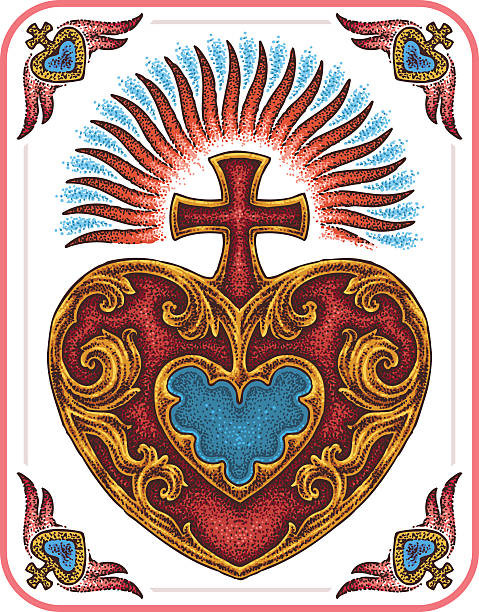
(“Ever since the private revelations of St. Margaret Mary Alacoque, the Church has sought to compose a proper Litany of the Sacred Heart of Jesus.Various authors created parts of the litany, with a final version approved in1899 by Pope Leo XIII. The Litany of the Sacred Heart of Jesus includes 33 invocations, one for every year of Jesus’ life.” [x])
3 notes
·
View notes
Text

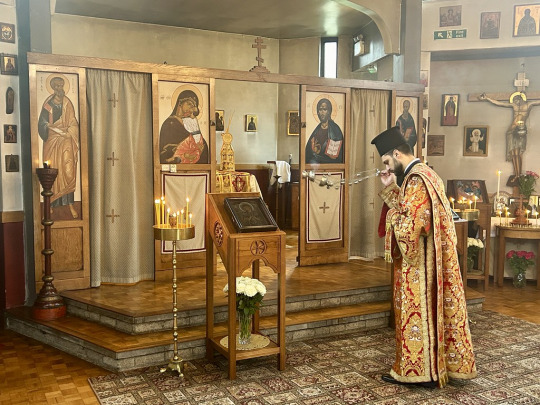
On Sunday, 18th February 2024, His Eminence Archbishop Nikitas of Thyateira and Great Britain presided during Matins and celebrated the Divine Liturgy at the Church of the Holy Trinity and Annunciation in Oxford. Amongst those concelebrating were the Revd Protopresbyter Ian Graham, Priest-in-charge, and the Revd Presbyter Seraphim Vanttinen-Newton. The Revd Archdeacon Dr. George Tsourous also served.
In his heartfelt sermon, the Archbishop drew from Apostle Paul’ epistle to the church in Corinth to remind us that we are indeed the living temples of God. He emphasised, “As the very dwelling of God, it’s essential for us to separate ourselves from the ways of the world. This is not a mere suggestion but a divine invitation to purity and holiness.” This separation, he explained, is not about isolation but about choosing a path that aligns with our sacred identity. “By distancing ourselves from anything that defiles our spirit or body, we open our hearts to a deeper relationship with God,” he continued.
In his address to the congregation, the Archbishop further emphasised the significance of unity in Christ. He highlighted how the diverse and multicultural congregation in Oxford transcends the variety of ethnic and cultural backgrounds and unites as one family. This unity, he noted, is a testament to the strength of their collective commitment to Christ and to each other, embodying the very essence of the Church as the body of Christ in the world.
Following the Divine Liturgy, the day’s celebrations culminated in a festal bring-and-share lunch held in the Community Hall. This gathering provided a wonderful opportunity for fellowship and joy, where the Archbishop had the chance to speak with the parishioners of Oxford, engaging in conversation and answering questions at length.
[Text and photo credit]
10 notes
·
View notes